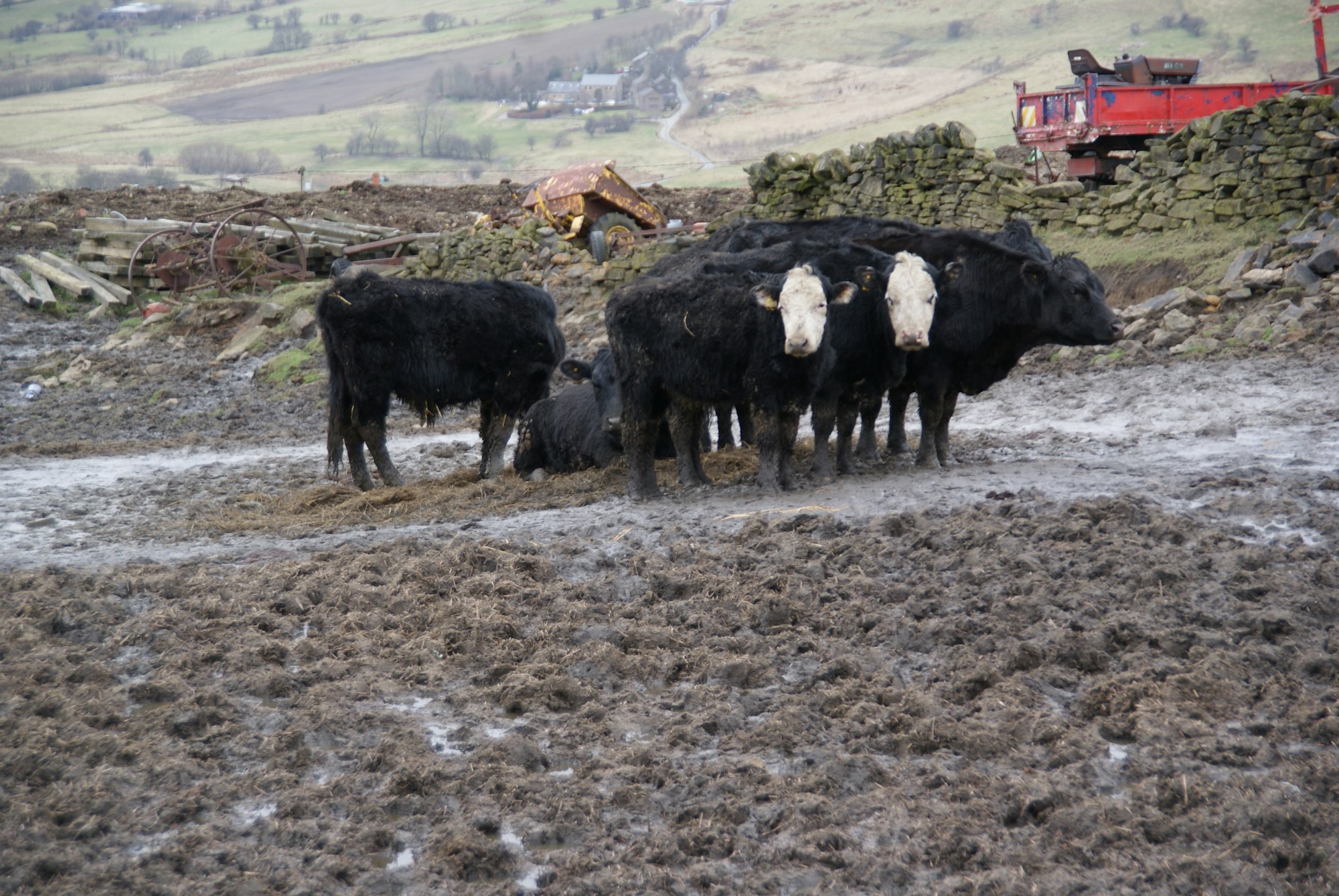Pasture Management
Well-managed pastures offer a host of benefits: healthy soils, greater water retention and water quality, increased plant vigor and productivity, and improved livestock health. Grazing, manure, and mud management are critical elements of effective pasture management.
Grazing Management
A critical piece of creating a healthy pasture is actively managing livestock grazing. Overgrazing occurs when livestock are allowed to continually graze on a pasture leading them to graze on plants before they have fully regrown. An overgrazed pasture leads to exposed and compacted soil, reduced water retention, water quality impacts from increased runoff and erosion, reduced plant diversity and increased presence of weeds, decreased forage production and value, and reduced livestock vigor in the future.

A critical technique to avoid overgrazing is implementing rotational grazing. In a rotational grazing system livestock are only allowed access to a limited area of a pasture. Once they have grazed the pasture, they are moved to another area. The animals are not returned to the previous pasture until it has fully regrown. Implementing rotational grazing prevents the livestock form overgrazing their preferred plants, allowing them to regrow and reducing the chance of weeds and less palatable plants overtaking the more beneficial ones.
A healthy pasture with diverse plant species results in better livestock production, healthier soils, increased water retention, and improved water quality.
Manure Management
Manure management is a critical piece of healthy pasture management. Manure, if well-utilized, can be a boon to pasture and soil health. Manure is rich in nutrients and microorganisms that can enhance soil and plant life. However, it is important that manure does not accumulate in excess or it can have negative impacts on soil, plants, animals, and water quality.
Rotational grazing can help assist with manure management: moving animals across pastures inherently results in more distributed manure. Regularly dragging pastures can also help by breaking up manure to increase its utilization for soil and pasture health. Collecting manure from pens, or if there is significant build up in pastures, and storing it away from water bodies in a covered area with an impermeable bottom helps protect animal health, soil health, and water quality. Stored manure can be utilized in the future or even sold; stored manure can also be composted, reducing its volume while maintaining its benefits.
Mud Management

Another key element of pasture management is utilizing heavy use areas in the winter. Allowing livestock on pastures in the rainy season increases the likelihood of bare soils, soil compaction, plant mortality, and unhealthy mud conditions for animals. Instead of allowing livestock to remain on all pastureland, livestock should be moved to a heavy use, or sacrifice area, for the rainy season; the idea is that a small amount of pasture is sacrificed for the health of the rest of the pasture and livestock.
A heavy use area is ideally of higher elevation to increase drainage and help avoid standing water, as well as located away from any water bodies. The ground should be covered with permeable yet durable material such as gravel or sand to increase water infiltration while helping prevent mud creation. Animals should be given access to a covered shelter as part of the area, and it is important to frequently collect and manage manure in this area. It is ideal to plant a vegetative buffer strip around the pasture area to collect and filter runoff, further reducing the potential for water quality impacts.
Utilizing a pasture sacrifice area in the winter is beneficial for the producer in terms of plant and animal health and vigor, as well as a for overall natural resource health in terms of reducing barren soil, compaction, erosion, and water quality impacts from runoff of excess sediment and other pollutants.


